 Your new post is loading...
 Your new post is loading...
Chemical triggers that make plants defend themselves against insects could replace pesticides, causing less damage to the environment. New research... identifies five chemicals that trigger rice plants to fend off a common pest – the white-backed planthopper, Sogatella furcifera Pesticides are used around the world to control insects that destroy crops... One of the problems with many pesticides is that they kill indiscriminately. For rice plants, this means pesticides kill the natural enemies of one of their biggest pests, the white-backed planthopper... This pest... causes the plants to wilt and can damage the grains. It also transmits a virus disease... which stunts the plants’ growth and stops them from “heading,” which is when pollination occurs. Left untreated, many of the insects’ eggs would be eaten, but when pesticides are used these hatch, leading to even more insects on the plants. What’s more, in some areas as many as a third of the planthoppers are resistant to pesticides... “Therefore, developing safe and effective methods to control insect pests is highly desired”... Because of the problems of using pesticides, it’s vital to find new solutions to help protect rice plants from infestation. Plants have natural self-defense mechanisms that kick in when they are infested with pests like the planthopper. This defense mechanism can be switched on using chemicals that do not harm the environment and are not toxic to the insects or their natural enemies... Researchers... developed a new way of identifying these chemicals. Using a specially designed screening system, they determined to what extent different chemicals switched on the plants’ defense mechanism... The researchers used bioassays to show that these chemicals could trigger the plant defense mechanism and repel the white-backed planthopper. This suggests that these chemicals have the potential to be used in insect pest management... “This new approach to pest management could help protect the ecosystem while defending important crops against attack.” The next step for the research will be to explore how effective the chemicals are at boosting the plants’ defenses and controlling planthoppers in the field. https://www.elsevier.com/about/press-releases/research-and-journals/chemicals-that-make-plants-defend-themselves-could-replace-pesticides Original article: http://dx.doi.org/10.1016/j.bmcl.2015.10.041
Via Alexander J. Stein
There is currently a great deal of concern about population declines in pollinating insects. Many potential threats have been identified which may adversely affect the behaviour and health of both honey bees and bumble bees: these include pesticide exposure, and parasites and pathogens. Whether biological pest control agents adversely affect bees has been much less well studied: it is generally assumed that biological agents are safer for wildlife than chemical pesticides. The aim of this study was to test whether... nematodes sold as biological pest control products could potentially have adverse effects on the bumble bee... One product was a broad spectrum pest control agent... the other product was specifically for weevil control... Both nematode products caused ≥80% mortality within the 96 h test period when bees were exposed to soil containing... nematodes at the recommended field concentration... Of particular concern is the fact that nematodes from the broad spectrum product could proliferate in the carcasses of dead bees, and therefore potentially infect a whole bee colony or spread to the wider environment. https://dx.doi.org/10.7717/peerj.1413
Via Alexander J. Stein
Nature’s large-scale patterns emerge from incomplete surveys, thanks to ideas borrowed from information theory.
In light of the Marine Strategy Framework Directive (MSFD) and the EU Thematic Strategy on the Sustainable Use of Natural Resources, environmental biotechnology could make significant contributions in the exploitation of marine resources and addressing key marine environmental problems. In this paper 14 propositions are presented focusing on (i) the contamination of the marine environment, and more particularly how to optimize the use of biotechnology-related tools and strategies for predicting and monitoring contamination and developing mitigation measures; (ii) the exploitation of the marine biological and genetic resources to progress with the sustainable, eco-compatible use of the maritime space (issues are very diversified and include, for example, waste treatment and recycling, anti-biofouling agents; bio-plastics); (iii) environmental/marine biotechnology as a driver for a sustainable economic growth. http://dx.doi.org/10.1016/j.nbt.2014.03.007
Via Alexander J. Stein
The extensive exploitation of marine resources by modern fisheries (...) has wide-ranging effects on marine ecosystems. Across the world's oceans, size-selective harvesting by commercial fisheries has been a key driving force behind changes in phenotypic traits such as body size and age at maturation (1–3). These changes have altered the trophic structure of the affected ecosystems, disturbed predatorprey relationships, and modified trophic cascade dynamics (3, 4). Phenotypic changes can involve both ecological and evolutionary reactions to the effect of fishing, and there has been much debate about the relative roles of these reactions. This is important because genetic changes could result in long-term reductions in catches. Recent work has provided evidence for fisheries-induced evolutionary changes, with important implications for the sustainability of fisheries. How Fisheries Affect Evolution
Andrea Belgrano, Charles W. Fowler Science 6 December 2013:
Vol. 342 no. 6163 pp. 1176-1177
http://dx.doi.org/10.1126/science.1245490
Via Complexity Digest
Bill Gates on how innovation is the key to a brighter future, and how we're only just getting started.
Biotech, farmer associations key for climate adaptation - panel Reuters AlertNet (blog) LONDON (Thomson Reuters Foundation) - An increasingly extreme climate is presenting new challenges to farmers across the world, and biotechnology and greater...
Colonies of bacteria balance growth against risk, just like financial investors, ecologists have found.
A small drop in one species' population can drive others to actually die out.
The 2007-2008 financial crisis, you might think, was an unpredictable one-time crash. But Didier Sornette and his Financial Crisis Observatory have plotted a set of early warning signs for unstable, growing systems, tracking the moment when any bubble is about to pop. (And he's seeing it happen again, right now.)
Via Complexity Digest
EAST LANSING, Mich. — An international team of scientists has developed crop models to better forecast food production to feed a growing population – projected to reach 9 billion by mid-century – in the face of climate change.
I had the great pleasure of co-authoring the International Peace Institute's (IPI) unique report on "Big Data for Conflict Prevention" (PDF) with my two colleagues Emmanuel Letouzé and Patrick Vinc...
The characterization of global marine microbial taxonomic and functional diversity is a primary goal of the Global Ocean Sampling Expedition. As part of this study, 19 water samples were collected aboard the Sorcerer II sailing vessel from the southern Indian Ocean in an effort to more thoroughly understand the lifestyle strategies of the microbial inhabitants of this ultra-oligotrophic region. No investigations of whole virioplankton assemblages have been conducted on waters collected from the Indian Ocean or across multiple size fractions thus far. Therefore, the goals of this study were to examine the effect of size fractionation on viral consortia structure and function and understand the diversity and functional potential of the Indian Ocean virome. Interesting paper - find more info on the findings of the study by clicking on the image or title.
|
The students in Anthony James’s basement insectary at the University of California, Irvine, knew they’d broken the laws of evolution when they looked at the mosquitoes’ eyes.
By rights, the bugs, born from fathers with fluorescent red eyes and mothers with normal ones, should have come out only about half red. Instead, as they counted them, first a few and then by the hundreds, they found 99 percent had glowing eyes.
More important than the eye color is that James’s mosquitoes also carry genes that stop the malaria parasite from growing. If these insects were ever released in the wild, their “selfish” genetic cargo would spread inexorably through mosquito populations, and potentially stop the transmission of malaria.
The technology, called a “gene drive,” was built using the gene-editing technology known as CRISPR and is being reported by James, a specialist in mosquito biology, and a half dozen colleagues today in the Proceedings of the National Academy of Sciences.
A functioning gene drive in mosquitoes has been anticipated for more than a decade by public health organizations as a revolutionary novel way to fight malaria. Now that it’s a reality, however, the work raises questions over whether the technology is safe enough to ever be released into the wild.
“This is a major advance because it shows that gene drives will likely be effective in mosquitoes,” says Kevin Esvelt, a gene drive researcher at Harvard University’s Wyss Institute. “Technology is no longer the limitation.”
Starting last summer, Esvelt and other scientists began warning that gene drives were about to jump from theory to reality (see “Protect Society from Our Inventions, Says Genome Editing Scientists”) and needed more attention by regulators and the public. The National Academy of Sciences is studying the science and ethics of the technology and plans to release recommendations next year on “responsible conduct” by scientists and companies.
Gene drives are just the latest example of the fantastic power of CRISPR editing to alter the DNA of living things, which has already set off a debate over the possibility that gene editing could be used to generate designer human babies (see “Engineering the Perfect Baby”). But Henry Greely, a law professor and bioethics specialist at Stanford, says environmental uses are more worrisome than a few modified people. “The possibility of remaking the biosphere is enormously significant, and a lot closer to realization,” he says.
Malaria is caused when a mosquito bite transmits plasmodium, a single-celled parasite. It’s treatable, yet every year, 670,000 people die from malaria, the majority of them young children in sub-Saharan Africa.
James says his mosquitoes are the culmination of decades of mostly obscure, unheralded work by a few insect specialists toward constructing a genetic solution to malaria. It finally became possible this year when scientists in the laboratory of Ethan Bier, a fly biologist at the University of California, San Diego, who is a coauthor of the paper, finally used CRISPR to perfect a molecular “motor” that could allow the anti-malaria genes to spread.
The mosquitoes have two important genetic additions. One is genes that manufacture antibodies whenever a female mosquito has a “blood meal.” Those antibodies bind to the parasite’s surface and halt its development. Yet normally, such an engineered mosquito would pass the genes only to exactly half its offspring, since there’s a 50 percent chance any chunk of DNA would come from its mate. And since the new genes probably don’t help a mosquito much, they’d quickly peter out in the wild.
That’s where CRISPR comes in. In a gene drive, components of the CRISPR system are added such that any normal gene gets edited and the genetic cargo is added to it as well. In James’s lab, practically all the mosquitoes ended up with the genetic addition, a result Esvelt calls “astounding.”
What worries Esvelt is that, in his opinion, the California researchers haven’t used strict enough safety measures. He says locked doors and closed cages aren’t enough. He wants them to install a genetic “reversal drive” so the change can be undone, if necessary. “An accidental release would be a disaster with potentially devastating consequences for public trust in science and especially gene-drive interventions,” he says. “No gene-drive intervention must ever be released without popular support.”
James says the experiment was safe since the mosquitoes are kept behind a series of locked, card-entry doors and because they aren’t native to California. If any escaped, they wouldn’t be able to reproduce.
In fact, the whole point of a gene drive is to release it into the wild, a concept that has long been accepted, at least in theory, by public health organizations including the Gates Foundation. Now that they’re actually possible, however, alarming news headlines have compared the technology to “the next weapon of mass destruction” and even raised the specter of insect terrorism, such as mosquitoes that kill people with a toxin.
Gene-drive terrorism is probably nonsense, at least for now. That’s because even if insect weapons were possible, in practice it’s unlikely a terrorist organization would invest millions in an advanced genetic-engineering program. “I have been thinking quite a bit about bad things you could do with it, and we haven’t come up with anything that would succeed,” says Bier. “There are so many bad things you could do that are easier.”
Instead, Bier and James say they are convinced that engineered mosquitoes should be released as soon as possible, something they hope to do if they can find a community affected by malaria that will agree to it. “Imagine we could design a mosquito that would magically cure cancer,” says Bier. “Well, the fear of getting malaria is the same fear we have of getting cancer. In my opinion the benefits outweigh the risks, and we should move forward as aggressively as we can.”
Via Gerd Moe-Behrens
Accessing information efficiently is vital for animals to make the optimal decisions, and it is particularly important when they are facing predators. Yet until now, very few quantitative conclusions have been drawn about the information dynamics in the interaction between animals due to the lack of appropriate theoretic measures. Here, we employ transfer entropy (TE), a new information-theoretic and model-free measure, to explore the information dynamics in the interaction between a predator and a prey fish. We conduct experiments in which a predator and a prey fish are confined in separate parts of an arena, but can communicate with each other visually and tactilely. TE is calculated on the pair’s coarse-grained state of the trajectories. We find that the prey’s TE is generally significantly bigger than the predator’s during trials, which indicates that the dominant information is transmitted from predator to prey. We then demonstrate that the direction of information flow is irrelevant to the parameters used in the coarse-grained procedures. We further calculate the prey’s TE at different distances between it and the predator. The resulted figure shows that there is a high plateau in the mid-range of the distance and that drops quickly at both the near and the far ends. This result reflects that there is a sensitive space zone where the prey is highly vigilant of the predator’s position. Information Dynamics in the Interaction between a Prey and a Predator Fish
Feng Hu, Li-Juan Nie and Shi-Jian Fu Entropy 2015, 17(10), 7230-7241; http://dx.doi.org/10.3390/e17107230 ;
Via Complexity Digest, Phillip Trotter
ALIFE 14, the Fourteenth International Conference on the Synthesis and Simulation of Living Systems, presents the current state of the art of Artificial Life—the highly interdisciplinary research area on artificially constructed living systems, including mathematical, computational, robotic, and biochemical ones. The understanding and application of such generalized forms of life, or “life as it could be,” have been producing significant contributions to various fields of science and engineering.
This volume contains papers that were accepted through rigorous peer reviews for presentations at the ALIFE 14 conference. The topics covered in this volume include: Evolutionary Dynamics; Artificial Evolutionary Ecosystems; Robot and Agent Behavior; Soft Robotics and Morphologies; Collective Robotics; Collective Behaviors; Social Dynamics and Evolution; Boolean Networks, Neural Networks and Machine Learning; Artificial Chemistries, Cellular Automata and Self-Organizing Systems; In-Vitro and In-Vivo Systems; Evolutionary Art, Philosophy and Entertainment; and Methodologies. Artificial Life 14 Proceedings of the Fourteenth International Conference on the Synthesis and Simulation of Living Systems Edited by Hiroki Sayama, John Rieffel, Sebastian Risi, René Doursat and Hod Lipson http://mitpress.mit.edu/books/artificial-life-14
Via Complexity Digest
Trophic cascade effects occur when a food web is disrupted by loss or significant reduction of one or more of its members. In East African Rift Valley lakes, the Lesser Flamingo is on top of a short food chain. At irregular intervals, the dominance of their most important food source, the cyanobacterium Arthrospira fusiformis, is interrupted. Bacteriophages are known as potentially controlling photoautotrophic bacterioplankton. In Lake Nakuru (Kenya), we found the highest abundance of suspended viruses ever recorded in a natural aquatic system. We document that cyanophage infection and the related breakdown of A. fusiformis biomass led to a dramatic reduction in flamingo abundance. This documents that virus infection at the very base of a food chain can affect, in a bottom-up cascade, the distribution of end consumers. We anticipate this as an important example for virus-mediated cascading effects, potentially occurring also in various other aquatic food webs.
Via Ed Rybicki
A few years ago, I started looking online to fill in chapters of my family history that no one had ever spoken of.
Scientists say there was a widespread extinction of bees 66 million years ago, at the same time as the event that killed off the dinosaurs. The demise of the dinosaurs was almost certainly the result of an asteroid or comet hitting Earth. But the extinction event was selective, affecting some groups more than others. Writing in Plos One journal, the team used fossils and DNA analysis to show that one bee group suffered a serious decline at the time of this collision.
Microsoft Research and UN scientists are embarking on a highly ambitious project: A computational model of an entire ecosystem, from the soil to the creatures that live on it and interact with it...
Farmers will not be allowed to spray widely used insecticide blamed for declining bee population A widely used insect nerve agent will be banned from use on corn and sunflowers in Europe from the end of 2013 as part of an effort to protect bees,...
This paper provides a logical framework for complexity economics. Complexity economics builds from the proposition that the economy is not necessarily in equilibrium: economic agents (firms, consumers, investors) constantly change their actions and strategies in response to the outcome they mutually create. This further changes the outcome, which requires them to adjust afresh. Agents thus live in a world where their beliefs and strategies are constantly being “tested” for survival within an outcome or “ecology” these beliefs and strategies together create. Economics has largely avoided this nonequilibrium view in the past, but if we allow it, we see patterns or phenomena not visible to equilibrium analysis. These emerge probabilistically, last for some time and dissipate, and they correspond to complex structures in other fields. We also see the economy not as something given and existing but forming from a constantly developing set of technological innovations, institutions, and arrangements that draw forth further innovations, institutions and arrangements.(...) Complexity Economics: A Different Framework for Economic Thought
W. Brian Arthur
SFI WP 13-04-012 http://www.santafe.edu/research/working-papers/abstract/36df2f7d8ecd8941d8fab92ded2c4547/
Via Complexity Digest, Ashish Umre
UCLA researchers now have the first evidence that bacteria ingested in food can affect brain function in humans. In an early proof-of-concept study of healthy women, they found that women who regularly consumed beneficial bacteria known as probiotics through yogurt showed altered brain function, both while in a resting state and in response to an emotion-recognition task.
BackgroundOn March 30, 2013, a novel avian influenza A H7N9 virus that infects human beings was identified. This virus had been detected in six provinces and municipal cities in China as of April 18, 2013. We correlated genomic sequences from avian influenza viruses with ecological information and did phylogenetic and coalescent analyses to extrapolate the potential origins of the virus and possible routes of reassortment events.MethodsWe downloaded H7N9 virus genome sequences from the Global Initiative on Sharing Avian Influenza Data (GISAID) database and public sequences used from the Influenza Virus Resource. We constructed phylogenetic trees and did 1000 bootstrap replicates for each tree. Two rounds of phylogenetic analyses were done. We used at least 100 closely related sequences for each gene to infer the overall topology, removed suspicious sequences from the trees, and focused on the closest clades to the novel H7N9 viruses. We compared our tree topologies with those from a bayesian evolutionary analysis by sampling trees (BEAST) analysis. We used the bayesian Markov chain Monte Carlo method to jointly estimate phylogenies, divergence times, and other evolutionary parameters for all eight gene fragments. We used sequence alignment and homology-modelling methods to study specific mutations regarding phenotypes, specifically addressing the human receptor binding properties.FindingsThe novel avian influenza A H7N9 virus originated from multiple reassortment events. The HA gene might have originated from avian influenza viruses of duck origin, and the NA gene might have transferred from migratory birds infected with avian influenza viruses along the east Asian flyway. The six internal genes of this virus probably originated from two different groups of H9N2 avian influenza viruses, which were isolated from chickens. Detailed analyses also showed that ducks and chickens probably acted as the intermediate hosts leading to the emergence of this virulent H7N9 virus. Genotypic and potential phenotypic differences imply that the isolates causing this outbreak form two separate subclades.InterpretationThe novel avian influenza A H7N9 virus might have evolved from at least four origins. Diversity among isolates implies that the H7N9 virus has evolved into at least two different lineages. Unknown intermediate hosts involved might be implicated, extensive global surveillance is needed, and domestic-poultry-to-person transmission should be closely watched in the future.FundingChina Ministry of Science and Technology Project 973, National Natural Science Foundation of China, China Health and Family Planning Commission, Chinese Academy of Sciences.
John Fullerton asks what it will take for mainstream economists and financial theorists to understand the vital connection between economics and ecosystem. Click on the image or title to learn more.
|



 Your new post is loading...
Your new post is loading...

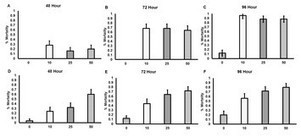
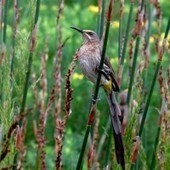

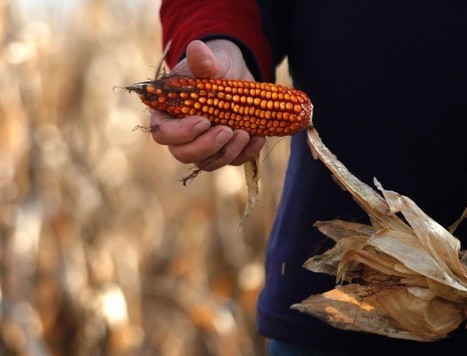

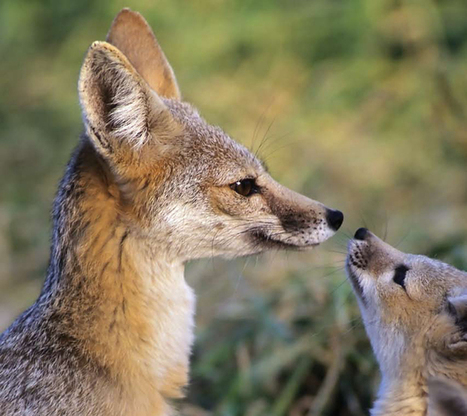



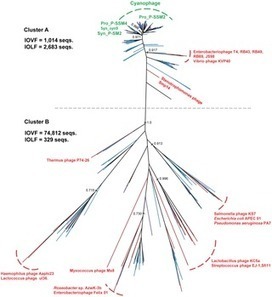
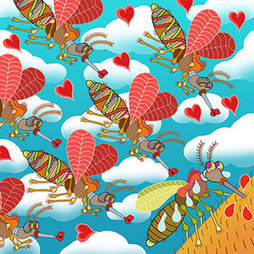



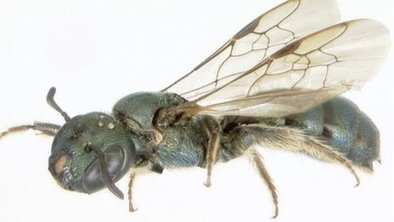

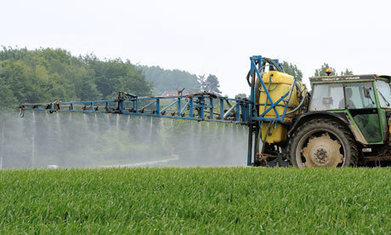







Its good to see more research in these areas - but it would be good if in parallel we looked at potential impact of activated and elevated triggers and response in terms of ecosystems and human health. Multi-systemic approaches are going to be increasingly needed, which is worrying given how limited funding in this area already is..